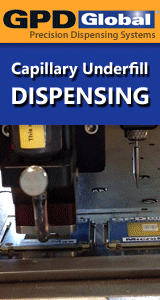Printed Circuit Board Assembly & PCB Design Forum
SMT electronics assembly manufacturing forum.
- SMTnet
- »
- Electronics Forum
- »
- ENiG or IAg? Which is better?
ENiG or IAg? Which is better?
Views: 14367
![]() Folks, what is the industry consensus? Which is the more po...
- Mar 06, 2008
by
Samir Nagheenanajar
Folks, what is the industry consensus? Which is the more po...
- Mar 06, 2008
by
Samir Nagheenanajar
![]()
![]()
![]() Black pad with IAg???
Tarnish is NOT black pad. Tarnish is...
- Mar 06, 2008
by
muse
Black pad with IAg???
Tarnish is NOT black pad. Tarnish is...
- Mar 06, 2008
by
muse
![]()
![]()
![]() Long, yellow, ugly toe nails will have the same affect on yo...
- Mar 06, 2008
by
Real Chunks
Long, yellow, ugly toe nails will have the same affect on yo...
- Mar 06, 2008
by
Real Chunks
![]()
![]()
![]() KRIKIES Chunks me-lady. Yellow toe-nails with tree rosin wi...
- Mar 06, 2008
by
Chim Richalds
KRIKIES Chunks me-lady. Yellow toe-nails with tree rosin wi...
- Mar 06, 2008
by
Chim Richalds
![]()
![]()
![]() Some guy who things he's cool cause he drives a Vette whilst...
- Mar 06, 2008
by
Real Chunks
Some guy who things he's cool cause he drives a Vette whilst...
- Mar 06, 2008
by
Real Chunks
![]()
![]()
![]() I have not had problems with ENiG panels, but they were made...
- Mar 06, 2008
by
Keverb
I have not had problems with ENiG panels, but they were made...
- Mar 06, 2008
by
Keverb
![]()
![]()
![]() I guess you are right, they both need some loven
...
- Mar 06, 2008
by
Keverb
I guess you are right, they both need some loven
...
- Mar 06, 2008
by
Keverb
![]()
![]()
![]() Sounds like bad mechanical skillz. Thank gawd you don't own...
- Mar 06, 2008
by
Hussman
Sounds like bad mechanical skillz. Thank gawd you don't own...
- Mar 06, 2008
by
Hussman
![]()
![]()
![]() I hear that. A 2002? You poor b-stard! That's like having...
- Mar 06, 2008
by
Real Chunks
I hear that. A 2002? You poor b-stard! That's like having...
- Mar 06, 2008
by
Real Chunks
![]()
![]()
![]() Oh my, a Ford? Did you lose a bet?
...
- Mar 06, 2008
by
Dr Shocker
Oh my, a Ford? Did you lose a bet?
...
- Mar 06, 2008
by
Dr Shocker
![]()
![]()
![]() Samir,
To correct some misconceptions on the answers to you...
- Mar 14, 2008
by
dean
Samir,
To correct some misconceptions on the answers to you...
- Mar 14, 2008
by
dean
![]()
![]()
![]() Unlike other solderability protection, immersion coatings [e...
- Mar 15, 2008
by
davef
Unlike other solderability protection, immersion coatings [e...
- Mar 15, 2008
by
davef
![]()
![]()
![]() Dennis: What do you do when you receive a black pad board? H...
- Mar 16, 2008
by
davef
Dennis: What do you do when you receive a black pad board? H...
- Mar 16, 2008
by
davef
![]()
- SMTnet
- »
- Electronics Forum
- »
- ENiG or IAg? Which is better?
.gif)






